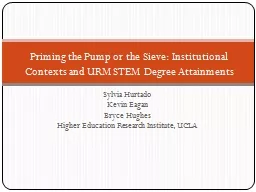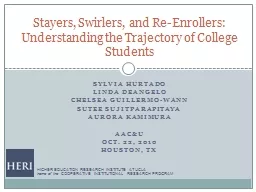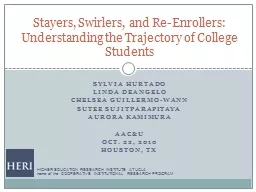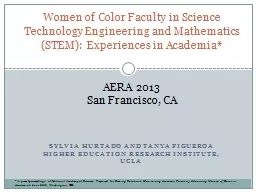PPT-Sylvia Hurtado
Author : tatiana-dople | Published Date : 2016-06-22
Kevin Eagan Bryce Hughes Higher Education Research Institute UCLA Priming the Pump or the Sieve Institutional Contexts and URM STEM Degree Attainments A National
Presentation Embed Code
Download Presentation
Download Presentation The PPT/PDF document "Sylvia Hurtado" is the property of its rightful owner. Permission is granted to download and print the materials on this website for personal, non-commercial use only, and to display it on your personal computer provided you do not modify the materials and that you retain all copyright notices contained in the materials. By downloading content from our website, you accept the terms of this agreement.
Sylvia Hurtado: Transcript
Download Rules Of Document
"Sylvia Hurtado"The content belongs to its owner. You may download and print it for personal use, without modification, and keep all copyright notices. By downloading, you agree to these terms.
Related Documents














